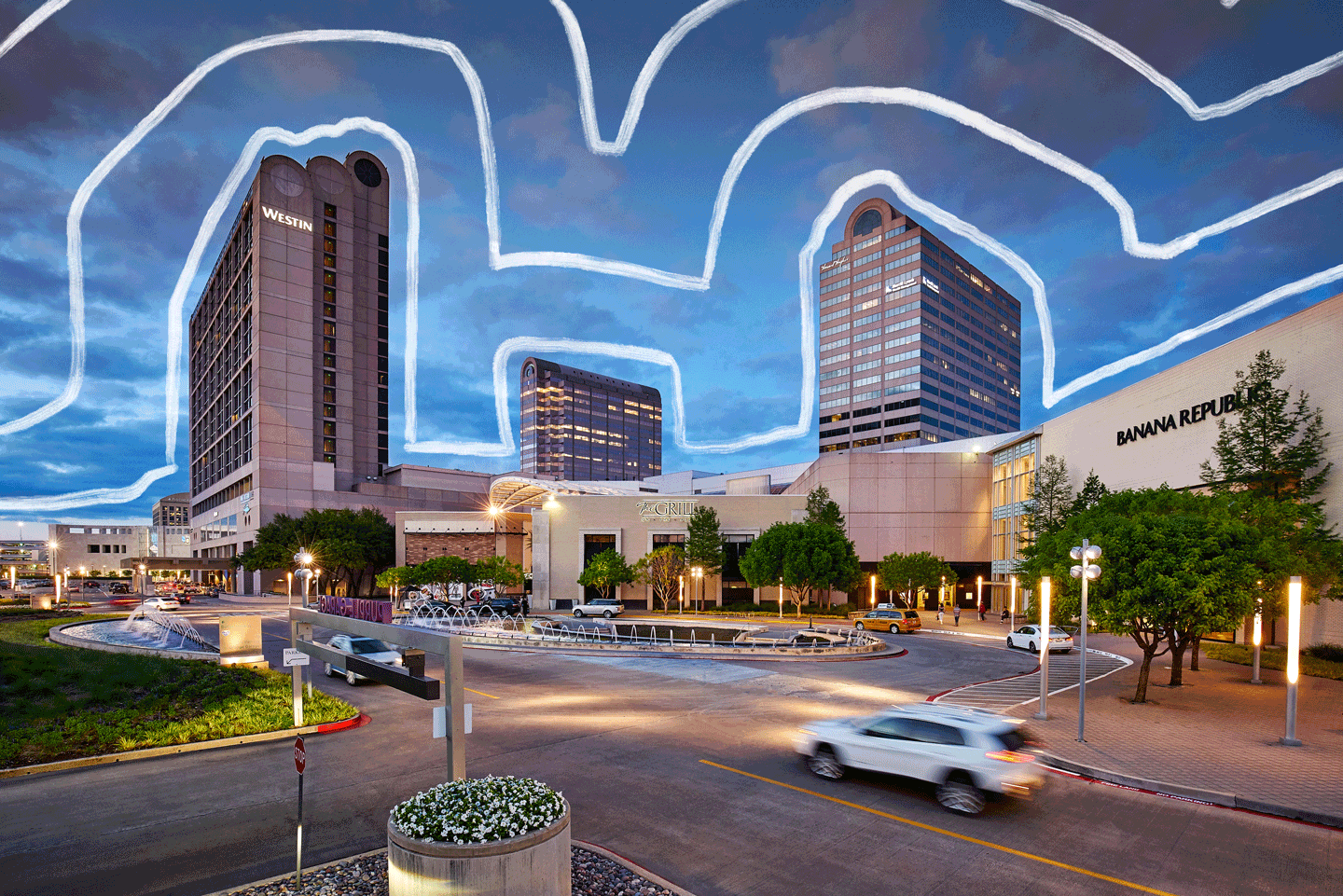“A true artist is not one who is inspired, but one who inspires others.” – Salvador Dali
Retail properties must continuously evolve to maintain relevance. To accomplish this, properties must think outside of the traditional model and reach towards enhancing communities and enriching lives. Mixed-use properties need to evolve into places that offer unique experiences.
This is why we developed the Conscious Place philosophy. Conscious Places are the next generation of retail environments that fold together development, commerce, community and connection. These community-oriented spaces provide more than just a place to transact business. They are dynamic, living collaborations that are sustainable, educational, and inspirational.
Art’s Role Within the Conscious Place
Art has a way of opening our minds, stirring thoughts and can even help nourish our spirit. Experiencing art allows us to see life from different perspectives and enriches our lives.
“Public art activates not only the space it occupies, but the neighborhood and city in which it exists as well. It is a gift to the unknowing passerby; it is an engagement of the imagination, and it expresses a spirit and creativity that changes communities.”
– Trademark Director of Design and Innovation, Cassie King
Investing in curated public art installations and collections is a major component of the Conscious Place initiative. Art can uniquely tell the story of the community, its people, and its history while acting as an amenity for visitors. Commissioning local artists invests in the fabric of the community, while fostering deeper ownership from its people and surrounding neighborhoods.
And ultimately, creative, art-infused spaces draw visitors. This is true no matter if you are a museum, a public park or a retail development. By incorporating more than 15 local artists and more than 30 works of art into the framework of Trademark spaces, visitors connect with and take ownership of the property as they experience and connect with the installations. Our public art program was a foundational element in evolving Victory Park, which from 2017 to 2019 saw an 87% increase in foot traffic.
“Embracing public art and the impact it can have on a space is a major initiative in our efforts to create a more vibrant, soulful place. By bringing creative, relevant public art to the project, we hope to enhance the emotional connection with the community.”
– Terry Montesi, Trademark CEO.
How Art Helps Drive Foot Traffic
To rival e-commerce, the next generation of mixed-use places need to offer visitors impactful, unique and unexpected experiences. Here are a few examples of how curated public art has made an impact at some of our properties.
Provides Memorable, One-of-a-Kind Experiences
Intentional art installations help provide natural photogenic moments that lend to effective visual word-of-mouth. As visitors connect with these unique experiences, they’re inviting others to do the same by sharing these moments through various social media outlets.

At Rice Village in Houston, Texas, “Space City” (shown above) by Michael C. Rodriguez of Houston became the cover of the 2019 Houston Visitors Guide. This promotion reached millions of viewers and drew the public to come and experience it for themselves. In turn, these visitors share their own unique moments through personal social networks – reaching an organically-grown audience that continues to nurture itself.
Adds Culture, Character and Authenticity
Curated public art meets visitors in the most unexpected ways. Ranging from murals in the parking garage to sculptures commemorating local culture and events, art can enhance the heart and soul of a property.

The addition of art installations can also help accomplish redevelopment goals. For example, adding in several public art pieces like the above was a key part of the strategy to increase walkability for Victory Park in Dallas.
Reflects Local Community, Honors History
Adding art installations into the design of a space can help create or re-create an experience that deepens the connection to the local narrative.

At Fort Worth’s Waterside, Texas artist Bob “Daddy-O” Wade was commissioned to create a public art series that celebrates the site’s history as the former Lockheed Martin Recreation Association. Wade repurposed amusement rides from the LMRA into sculpture and made murals by hand-tinting historic photography from activities at the site.
Fosters Ownership
Commissioning local and well-known artists creates a stronger sense of community that drives loyalty for repeat visits. This investment also helps deepen the community commitment in the local art scene.

WestBend, an outdoor lifestyle mixed-use development, has a total of 26 unique works, one of the largest public art collections in Fort Worth. This collection includes murals by local artist Kyle Steed, “Love” sculpture from Laura Kimpton and nine Amon Carter photographs.
We view our tenants and visitors as artists in and of themselves. As Dali said, the true artist is not just inspired—but inspires others. In our case, at Trademark properties, our mission is to inspire our visitors so much so that they inspire others to come.
To learn more about available retail spaces throughout Trademark’s portfolio, and how our initiatives grow foot traffic and increase consumer loyalty, fill out the form below. We’ll be in touch.

